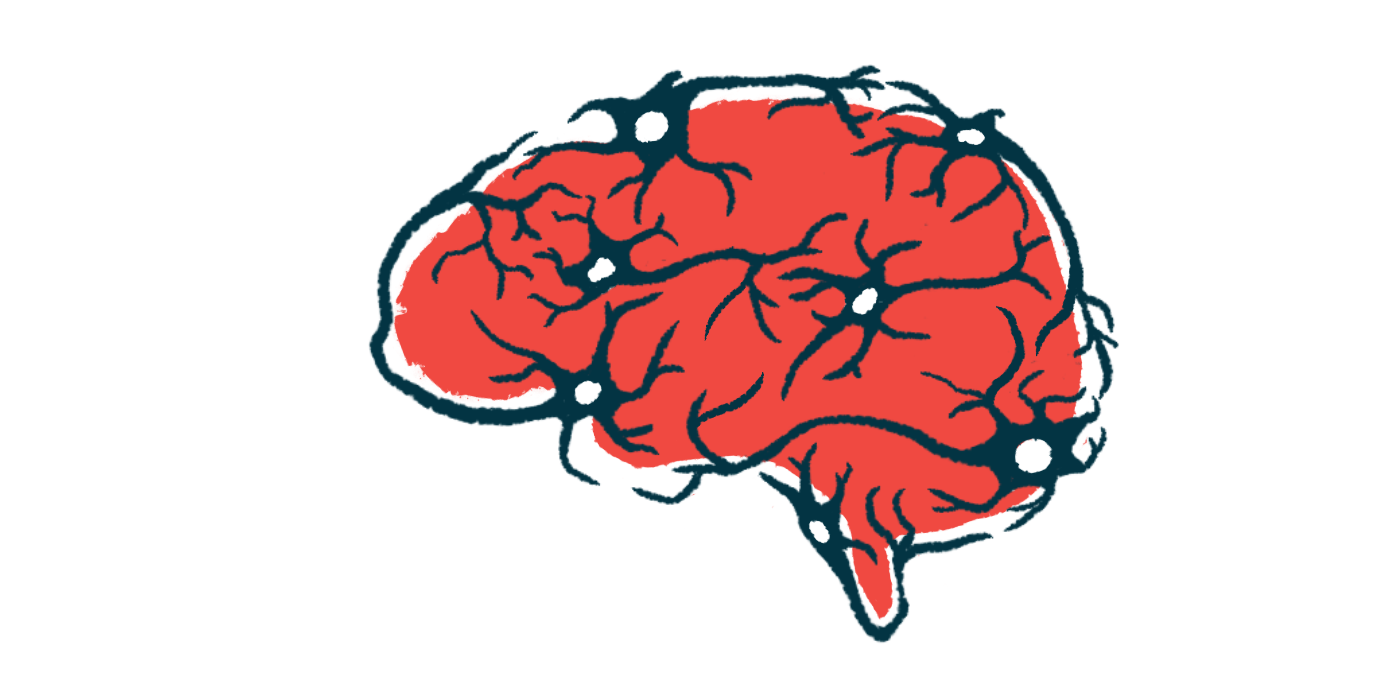Degree of DAT protein loss in brain may mark Parkinson’s severity
Findings most evident in men and support DAT imaging in tracking progression
Written by |

The greater the loss of dopamine transporter (DAT) protein in a brain region significantly affected by Parkinson’s disease — the striatum — the more severe are patients’ motor and nonmotor symptoms over time, particularly for men, a study reported.
DAT levels were assessed with DAT imaging, a scanning technique typically used to diagnose Parkinson’s.
Study findings offer “novel evidence for the clinical usage of DAT binding as an imaging marker of [Parkinson’s] progression,” the researchers wrote.
The study, “Associations of striatal dopamine transporter binding with motor and non- motor symptoms in early Parkinson’s disease,” was published in Clinical and Translational Science.
Imaging data from people in the Parkinson’s Progression Markers Initiative
A progressive loss of dopamine-producing, or dopaminergic, neurons in a brain region called the substantia nigra marks Parkinson’s. These dopaminergic neurons extend into the striatum, where they release the signaling chemical dopamine to modulate motor and other abilities.
DAT imaging allows scientists to visualize dopamine-producing neurons in the brain. A radioactive tracer is injected into the bloodstream and binds to DAT, which reside on dopaminergic neurons and help to carry the chemical in and out of cells. An imaging technique that detects radiation then is used to “see” the cells.
The degree of DAT binding in the striatum, reflective of dopamine release from the substantia nigra, has been shown to correlate with the presence or absence of certain Parkinson’s motor and nonmotor symptoms.
However, the relationship between striatal DAT binding and Parkinson’s symptoms over time remains unclear.
Researchers in China examined DAT imaging data collected for 352 Parkinson’s patients (mean age of 62) and 167 people without this adults without this disease (mean age of 61.6). All were participating in the Parkinson’s Progression Markers Initiative (PPMI), a large international study collecting clinical, genetic, neuroimaging, and other data from people with and without Parkinson’s over time.
The Parkinson’s group were not yet on any disease treatment when they entered PPMI and initial — or baseline — measures were taken, the scientists noted.
“Our study aimed to define the … correlation between PD [Parkinson’s disease] clinical characteristics and DAT binding at PD at the early stage,” the researchers wrote.
Results from initial data showed Parkinson’s patients had poorer motor and cognitive abilities, as well as a greater burden of nonmotor symptoms and lower DAT binding in the striatum.
Among patients, worse motor function, as assessed by the Hoehn and Yahr Scale and the Movement Disorder Society-Unified Parkinson’s Disease Rating Scale (MDS-UPDRS), was associated with lower striatal DAT binding.
Less DAT binding also was evident in patients with muscle rigidity and freezing of gait, or the inability to lift the foot and take a step.
All these associations were generally true for men, but not women, with Parkinson’s.
Among people without Parkinson’s, lower DAT binding also was evident in those with greater tremor and problems with smell (olfactory dysfunction).
Significant loss of protein binding in the striatum seen over time
A total of 266 patients had data reaching out up to two years, and 232 had data covering up to four years. Analyses of these long-term data indicated a significant reduction in DAT striatal binding over four years.
More severe REM sleep behavior disorder (RBD), a common sleep disorder in this disease, in initial measures predicted greater declines in DAT binding over four years.
During this period, greater increases in scores on the MDS-UPDRS and its subscales, reflecting worsening nonmotor and motor impairments, were associated with greater declines in DAT binding for the entire group of Parkinson’s patients, with particular associations noted among men.
Likewise, as measures of anxiety worsened, DAT binding declined.
Findings were often similar in two subregions of the striatum — the caudate and putamen — to the striatum as a whole, but DAT binding in the caudate showed stronger links to motor and nonmotor symptoms than the putamen.
These findings, overall, support the use of striatal DAT imaging to monitor Parkinson’s progression, the researchers wrote.
Study limitations included this patient group being younger and less disabled than the general Parkinson’s population at initial data collection, and the fact that they initially weren’t using dopamine-replacing therapies, although later starting on them.
“Further studies are warranted to clarify the associations between different regional dopamine binding with specific clinical features,” the team concluded.






